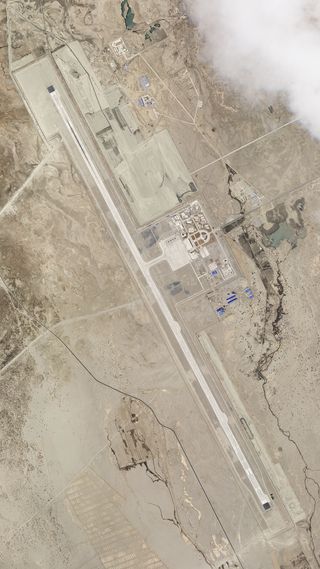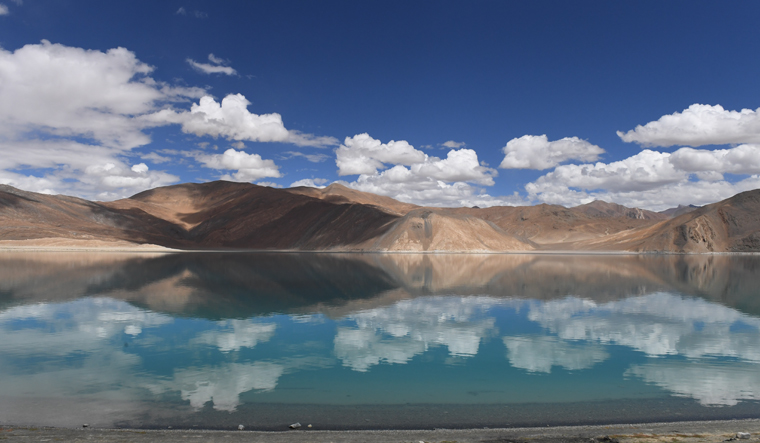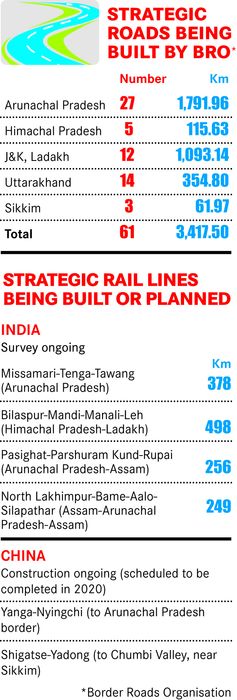On September 16, 2019, the Indian Army’s Northern Command tweeted photos of its chief, Lieutenant General Ranbir Singh, sitting atop a T-90 tank and watching the “integrated exercise of all arms” in “super high altitude area” in Pangong, Ladakh. To most people, it appeared to be another ‘PR photo’.
It was not. The photo changed the military-tactical picture of Ladakh, literally! It announced to the world that India was now capable of deploying tanks on the mountains of Ladakh.
Ladakh and thereabouts on the Himalayas had always been infantry country. Tankmen have rarely ventured onto the mountains. In the 1947-48 war with Pakistan, the dashing General Thimayya took a few across the Zoji La; tanks were tried to be put to battle in 1962; and a pilot programme to deploy them in Ladakh in the 1990s was given up.
Ladakh, thus, had always been the foot soldier’s domain. On the other hand, the Indian Army knew that the Chinese could bring tanks and artillery down the Lhasa-Xinjiang G219 Highway and drive them down the newly-built subroads towards several parts of Ladakh, especially in Chushul and Demchok. In other words, the Chinese had the armour advantage. India had been hamstrung by the fact that its undeveloped roads could not take tanks and most of the rivers on its side were unbridged.
The situation had been changing since the mid-2000s when India launched a building spree of roads and bridges near the borders. Several landing grounds were prepared during the second Manmohan Singh government and the old airfield at Daulat Beg Oldi was upgraded to take military transport planes. The Narendra Modi government followed up the building projects. By 2015-16, the Army found it could actually deploy tanks and sustain armoured operations. A slow induction of tanks commenced since then.
The tactical picture changed officially last September when it was announced to the world with the photo. “We have been inducting tanks for some time, but if we have displayed them in exercise, that means we have them in regiment strength now,” said an intelligence analyst. “We now have the capability to even take an aggressive posture, if we want.”
Apparently, it was the completion of a bridge over the Shyok River on the 255-km Darbuk-Shyok-Daulat Beg Oldi road that has now emboldened India to announce the ‘arrival’ of tanks. “We can now supply and sustain armoured operation there,” said the analyst. “Our guess is that this has provoked the Chinese now; they are now objecting to several of our bridge- and road-building activities.”
The September exercise also saw huge C-130J transport planes unloading troops and heavy equipment, paratroopers jumping from Mi-17 helicopters, foot soldiers being carried swiftly across the plateaus in armoured vehicles, and Heron UAVs flying around. Clearly, with India’s capability to deploy tanks in strength, the battle order in Ladakh is changing.
Indeed, the Chinese were also watching. In February, the People’s Liberation Army carried out an even larger exercise in Tibet, where it deployed and displayed Type 15 tanks, the brand new T-96 tanks and the 55mm vehicle-mounted howitzers. China also made it known that it had developed a wheeled light infantry fighting vehicle and a new light tank that could be used in mountain warfare.
China had also been augmenting its air war machine in Tibet for the past decade and a half. Airports and airfields in Shigatse, Nyingchi and Lhasa have been upgraded, and there have been increased fighter flying over Tibetan skies. Satellite photos have also revealed early-warning planes parked in Lhasa, apart from fighter aircraft and troop-carrying helicopters, and also a new runway being built in Shigatse airport, apparently for UAVs. During a discussion held at the Delhi-based Vivekananda International Foundation on the growing capabilities of the Chinese air force in Tibet, former Indian Air Force chief B.S. Dhanoa said that over the past few years, there had been a significant induction of aircraft and aircrew into the Tibet Autonomous Region from other military regions. The deployment of Sukhoi-27, J-11 and J-10 fleets for continuous operation during winter months afforded the Chinese credible year round capability. Earlier, they only used to occupy the airfields during the summers.
China has 14 airbases in the Lanzhou and Chengdu regions, which are opposite Ladakh, Uttarakhand, Himachal Pradesh, Arunachal Pradesh and Sikkim. In April, a large area was developed parallel to the runway at the Ngari Gunsa dual-use airbase, where a detachment of Flankers has been deployed since May. The fighters were first seen in the area last December.
AirLand battle scenarios involving land and air forces have been tested since mid-2015 with more than 1,40,000 troops. Exercises were going on in Tibet even during mid-2017, when the Doklam crisis was unfolding. The PLA had then claimed that the exercise “effectively tested the brigade’s joint strike capabilities on plateaus”, and at 16,400 feet.
In short, both armies have been upgrading their fighting capabilities for more than a decade now, and are now more or less evenly matched. “It is this parity that the Chinese want to remove; so they are asking us to stop building certain bridges and roads,” said the analyst.
But the Indian side seems to be determined this time. Unlike in the case of Doklam three years ago, when India had refrained from making any official statements, Defence Minister Rajnath Singh admitted that PLA soldiers had “come a little further than they used to earlier” in eastern Ladakh, making the “situation different” from earlier face-offs. He said Chinese troops were present in sizeable numbers. Unconfirmed estimates say between 3,000 and 5,000 troops have been deployed partly in the disputed stretches and otherwise close to the line of actual control in the Galwan valley, the northern bank of Pangong Lake and Demchok. All eyes are on the military talk between corps commanders on June 6.
In the Galwan valley, which is looked after by India’s 81 and 114 infantry brigades under the 3 Mountain Division, a few Chinese troops have come deep inside and pitched tents while their buddies are building roads to supply them. Intelligence reports suggest that the insertions took place on May 5 in Galwan, on May 9 in Naku La (northern Sikkim), on May 12 and 13 near Pangong Lake. Satellites have since picked up pictures of the Chinese moving towed artillery, trucks and infantry combat vehicles to a few kilometres behind the LAC near the Hot Springs and Gogra. The PLA is estimated to have 2,00,000 to 2,30,000 troops under its western theatre command which envelops Tibet and Xinjiang military districts.
The problem, in case of a flare-up, may not be of numbers, but of command coordination. India still has four corps deployed against China—one in Ladakh, one in Sikkim and two in Arunachal Pradesh. “We definitely have greater numbers on the LAC,” said Lieutenant General (retd) D.S. Hooda, former northern Army commander. “We match up their strength and our total deployment on LAC is greater than the Chinese. Having said that, we must acknowledge that our infrastructure still does not match the Chinese who have roads coming right up to the LAC.”
If the current border standoff flares up, all the operational decisions on the Chinese side will be taken by General Zhao Zongqi who, sitting in Chengdu, commands all the forces, including the squadrons of fighter jets, in China’s western theatre. He will decide the scale of operations, which units to be employed in what formation, how much force to be employed, where to strike other than in Ladakh, and where to hold territory. Under him, he has General Xu Yong, who commands the Tibet military district which is directly under the PLA, unlike other regions which are controlled politically by the Central Military Commission. This meant that operations in Ladakh, in Sikkim or in Arunachal can be synchronised under one command under Zhao, giving him a formidable advantage. There is no such one field commander on the Indian side. Matching wits and clashing arms with Zhao and Xu will be six three-star officers sitting hundreds of miles from one another—the northern Army commander at Udhampur, the central Army commander in Lucknow, the eastern commander in Kolkata, the western air commander in Delhi, the central air commander in Allahabad and the eastern air commander in Shillong. These six gentlemen will have to decide on the operations, coordinated, of course, by the directorate-general in Delhi.
The Chinese have also reorganised their field formations into mobile brigades, whereas India continues with the World War II style corps-division-brigade system. ‘’The brigadisation of the PLA is another advantage which makes the actions of the Chinese army more flexible and responsive to new and complicated situations,’’ said French-born author, historian and China watcher Claude Arpi. India is also following suit, but again slowly. The 65-year-old General Zhao is one of the few commanders who had taken part in China’s Vietnam war of the late 1970s (the last time the PLA fired shots in anger), and is reported to be quite close to President Xi Jinping. Having served in Tibet for nearly 20 years, he knows the Indian frontier like the back of his hand.
There are reports that Zhao may finally be retiring, or elevated to the Central Military Commission. Arpi pointed to reports coming from China that a newly promoted Lieutenant General Xu Qiling has taken over as the new commander of western threatre ground forces. A report of the Chinese western Army’s official WeChat account on May 29 had said that a meeting of the command’s standing committee was convened “to convey the spirit of learning of the third meeting of the 13th National People’s Congress”. Xu Qiling delivered the report at the meeting, which was presided over by the army political commissar Xu Deqing.
Xu Qiling, too, is an experienced hand at joint theatre management. As a major general, he had served as the deputy commander in the central theatre. Later, he served as the commander of the 79th Army in the northern theatre. In January 2019, he became deputy commander of the eastern theatre, and was promoted to the rank of lieutenant general in December.
—with R. Prasannan




